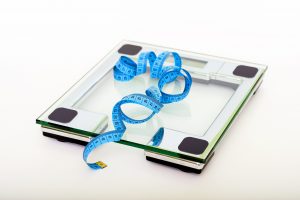 Your weight isn’t the only measurement you use to see if you’re making progress, so why do you let the scale bully you and taunt you. Maybe it’s because you aren’t aware of the other options and really, how well they work, providing a more accurate idea of how you’re doing on your fitness program. The scale doesn’t also show the real progress you made, which can be devastating and the reason to use several techniques.
Your weight isn’t the only measurement you use to see if you’re making progress, so why do you let the scale bully you and taunt you. Maybe it’s because you aren’t aware of the other options and really, how well they work, providing a more accurate idea of how you’re doing on your fitness program. The scale doesn’t also show the real progress you made, which can be devastating and the reason to use several techniques.
If you’re building muscle tissue, you may be getting narrower, but not losing weight.
The whole idea of working out is to tone your body and look fabulous. When you build muscle tissue, but don’t lose weight, you need to take measurements or judge by how tight your pants are. Muscle weighs more per cubic inch than fat does. Comparing a pound of muscle with a pound of fat is like comparing the size of a container that holds a pound of steel to one that contains a pound of feathers. Even if you weigh the same, you’ll look far thinner and wear a smaller size.
Take a measurement around your middle.
Waist circumference is an important measurement that’s quickly taking place of BMI or used in conjunction with it. Not only does it give you an idea of how much weight or fat you lost, it also is a good indicator of health. The fat that gathers around your middle is visceral fat, which is the most dangerous type of fat that crowds your internal organs and increases your risk for serious conditions. Pat yourself on the back if your waist circumference is getting smaller.
Snap a picture of yourself when you start.
Take a picture of yourself in the mirror or have a friend take a picture. Once every two weeks or once a month, repeat the process, in the same spot, wearing the same clothes and at the same distance from the camera. Not only will you have a good comparison you can go back several months and see a big difference in how you look. If you have a pair of pants you haven’t worn for a while because they don’t fit, use them as your measurement. When you can fit into those pants, buy another pair that’s too tight.
- Even if you are making progress, sometimes scales lie. Your weight fluctuates constantly, whether from water retention and bloating or another problem. You’ll see those fluctuations if you weigh daily. Weigh once a week and use a second way to measure progress.
- Can you pinch an inch. You can use skinfold calipers to see how much subcutaneous fat you have under the skin. Use it in the area above the hip bone, the tricep, thigh or abdomen.
- Track your workout progress. If you could barely make it through the workout the first time and now you’re doing tons more repetitions without gasping for breath or begging to quit, you know you’ve made progress.
- Use a fitness tracker to help you see your progress on your weight loss journey. Whether you use your fitness tracker to check your heartrate, blood pressure or how many steps, seeing the numbers you want can be encouraging.
For more information, contact us today at Reggie C Fitness
